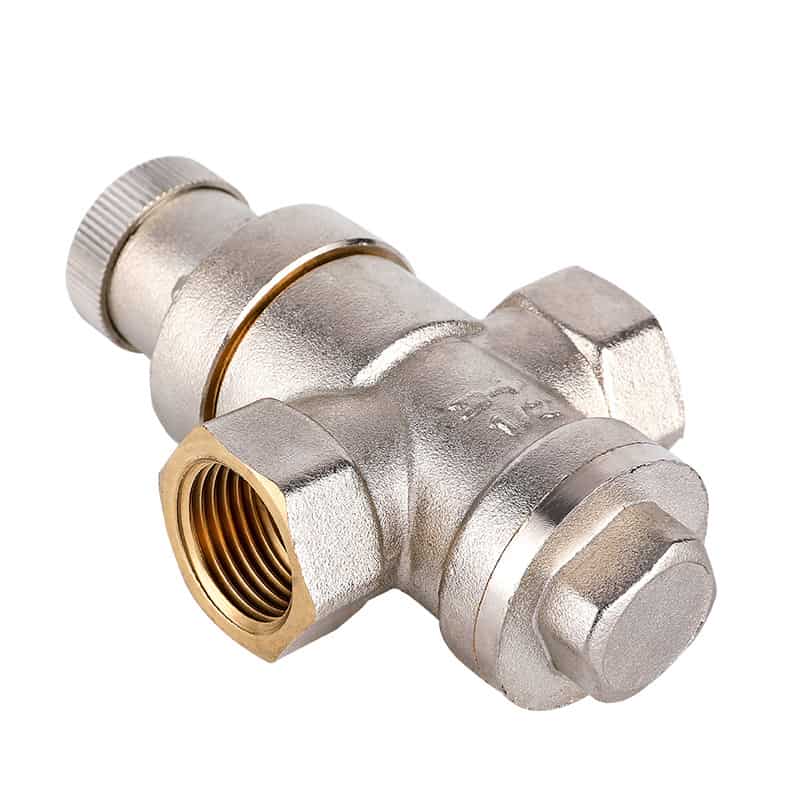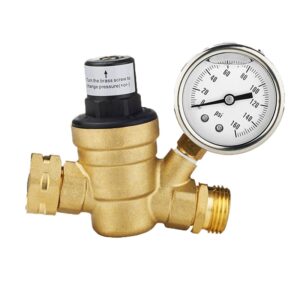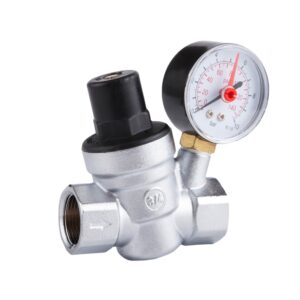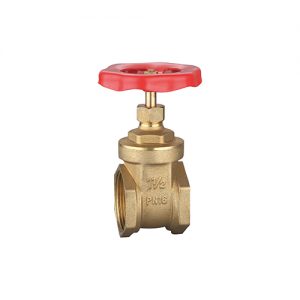Description
Piston-type pressure regulating and reducing valve
JX-0315
Piston-type operation.
FXF threads connection
Sandblasted with nickel-plated finish
Minimum and maximum working temperatures: 0°C-60°C.
Maximum inlet pressure: 16 bar.
Pressure from 1 and 6 bar;
Outlet pressure gauge connection 1/4″ on both sides.
DIN EN ISO 228 and BS EN ISO 228).
| Body | Brass | CW617N |
| Medium | Water | |
| Type | Piston | |
| Standard | EN331 | ISO 228 |
| Pipe size | 1/2″, 3/4″ | |
| Working pressure | 0 to 1 Mpa | |
| Working temperature | 0.1 to 60 °C | |
| Finish | Sandblasted with nickel plated | |
| Certification | NF | |
| Material of seal | Hydraulic | |
What is a Pressure Regulating Valve?
A pressure-regulating valve regulates the flow of fluids, gases, and other materials. This type of valve can be used in various applications, from controlling the pressure in boilers and pipes to regulating the flow of fuel or hot water in industrial facilities. The piston-type pressure regulating and reducing valve is one device commonly found in various industries.
This valve utilizes a piston-type design to control the flow rate using an adjustable spring mechanism or pilot control system. The position of the piston inside the valve determines how much fluid will be allowed through at any given time. As this process occurs, it helps maintain constant pressure levels regardless of demand or external conditions. In addition, this regulating valve also helps protect against over-pressurization by releasing some additional amount when required.
Types of Pressure-Regulating Valves
Pressure-regulating valves are an essential component of any fluid system, providing the necessary adjustment of flow rate and pressure to maintain a safe and efficient operation. There are several types of pressure-regulating valves available for use in different applications. Among them, piston-type pressure regulating and reducing valve is one among the most popular. This type of valve can regulate pressure by altering its orifice size.
Piston-type pressure regulating and reducing valves typically consist of two main parts: a poppet assembly which contains a piston that can move up or down on command, and a spring that pushes against the poppet assembly to create force. The poppet assembly is connected to the main body through a bleed tube, allowing movement between these two components.
Piston Type Pressure Reducing and Regulating Valve Components
Piston-type pressure regulating and reducing valves are a type of control valve used to regulate fluid pressure in various industrial applications. They are designed to maintain a safe and constant operating pressure, regardless of system variations in flow rate and upstream or downstream pressures. The piston-type valve uses two components to function correctly: an actuator and the valve body.
The actuator is responsible for controlling the amount of pressure reduction, while the valve body contains a piston that regulates the flow rate. The actuator adjusts the position of the piston within the valve body, which works to modify or reduce upstream pressure levels before reaching downstream points. In addition, these valves can also be used as on/off valves with their ability to shut off flow completely when necessary.
Benefits of Piston Type Pressure Reducing and Regulating Valves
Piston-type pressure regulating and reducing valves are essential elements in any industrial system. This type of valve reduces the flow rate or regulates the pressure in a piping system to maintain optimal performance. Not only does this type of valve offer a range of benefits, but it also ensures that industrial systems are safe and efficient at all times.
The most notable benefit of piston-type pressure regulating and reducing valves is their ability to control the output flow rate or pressure precisely. These valves can be adjusted quickly and accurately while providing a consistent input signal. Additionally, they require minimal maintenance compared to other valves, making them an economical choice for industrial systems. Furthermore, these valves feature durable construction and improved sealing capabilities, which help ensure high levels of reliability over time.
Installation Considerations
Installing a piston-type pressure regulating and reducing valve is a common industrial application that can be found in many water distribution systems. It is essential to understand the necessary considerations for successfully installing these valves.
One major factor to consider when installing these valves is the sizing requirements. The valve size should match the flow rates, pressures, and other characteristics of the system it will be servicing. There is also important to allocate enough space for installation so that all parts can fit correctly and work together as intended.
In addition, proper maintenance procedures must be followed when installing this type of valve to ensure its longevity. Regular inspections should be carried out to identify any potential issues with the system before they become serious problems.
Maintenance Requirements
Piston-type pressure regulating and reducing valves are a great way to manage the pressure within a system, but they require regular maintenance to ensure they remain effective. These valves must be inspected periodically for any wear or damage. It is essential to check for any corrosion or fouling issues, as these can impair the valve’s performance and lead to dangerous outcomes. Additionally, all fasteners must be kept tight and lubricated. Monthly inspections should also include checking for any changes in operation or pressure readings and ensuring that proper safety devices are functioning correctly. Lastly, it is essential to ensure that all piston-type pressure regulating and reducing valve components have been appropriately reassembled after maintenance to prevent potential issues down the line.







